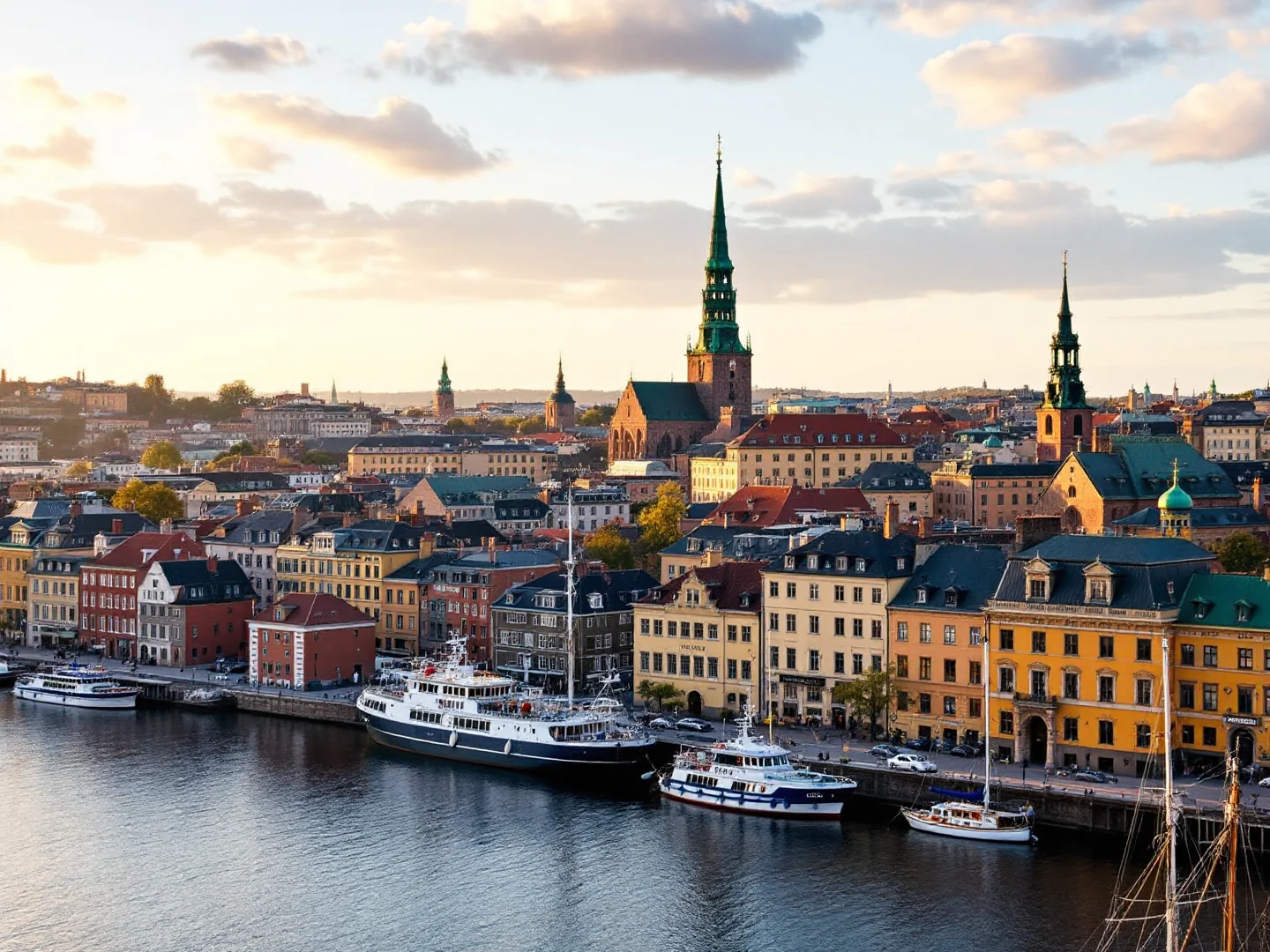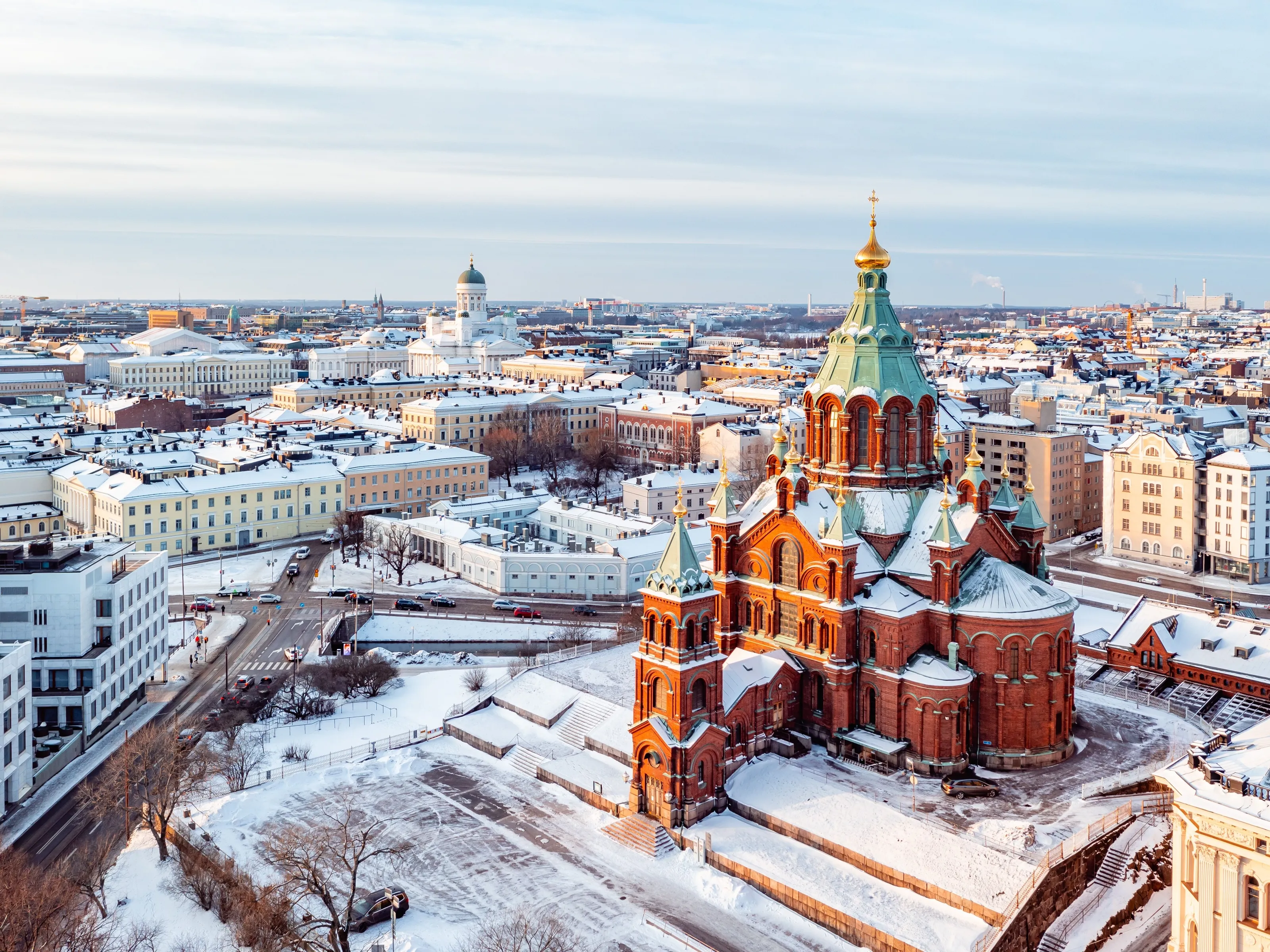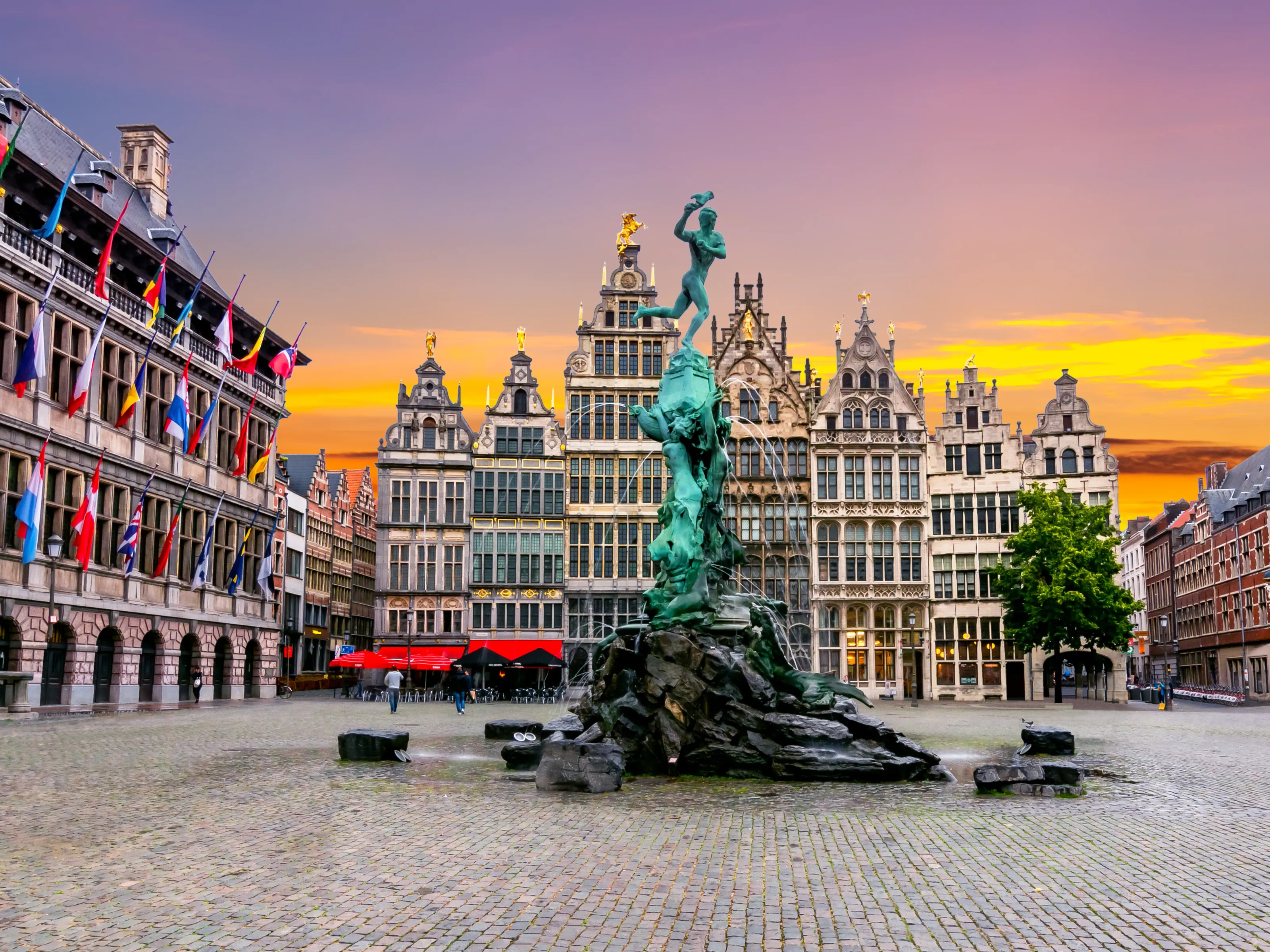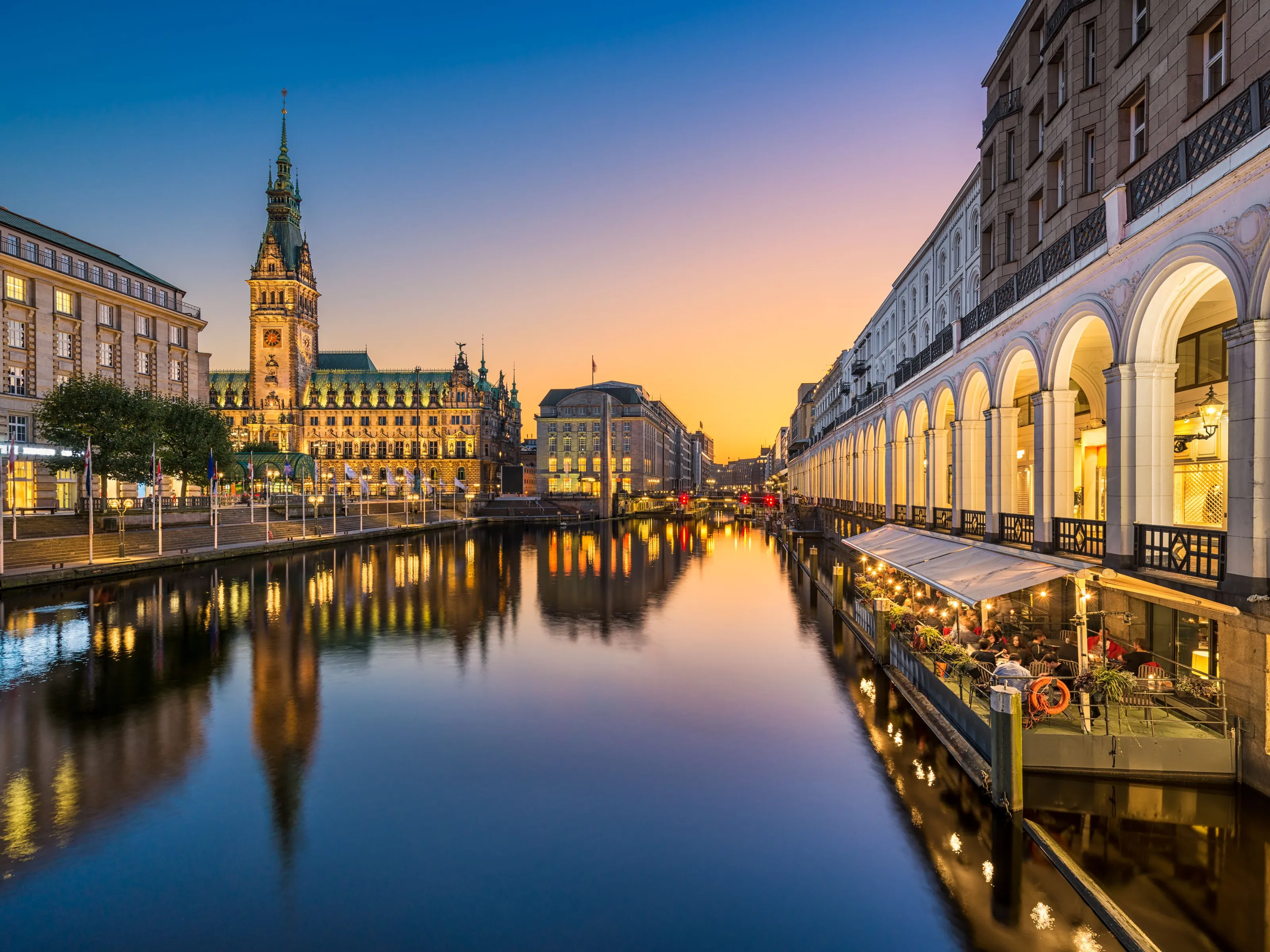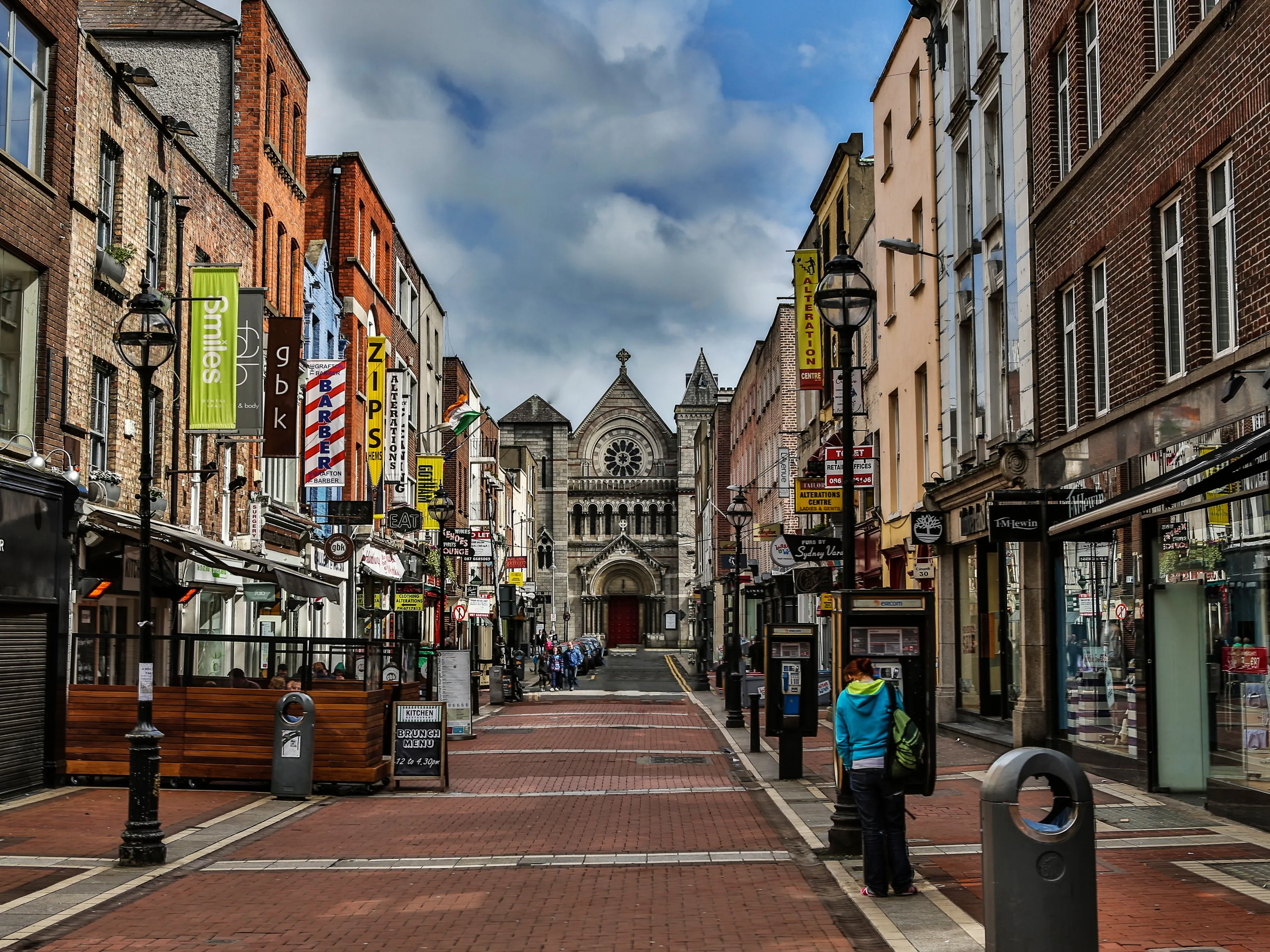Why Visit Gothenburg?
Gothenburg charms as Sweden's west coast gateway where cobblestoned Haga district preserves wooden houses and cinnamon bun cafés, Feskekôrka fish market serves the freshest seafood in church-like Gothic Revival hall, and Southern Archipelago islands offer car-free summer escapes reachable by ferry. Sweden's second city (pop. 580,000) embraces relaxed coastal vibe—less formal than Stockholm, friendlier locals, and strong coffee culture in every neighborhood.
Haga's 19th-century wooden facades house boutiques, vintage shops, and kanelbulle (cinnamon bun) bakeries, while Avenyn boulevard's grand avenue connects parks to Götaplatsen's Poseidon statue and Art Museum. The archipelago defines Gothenburg—Southern Archipelago ferries (free with Gothenburg City Card) reach Styrsö's fishing villages, Vrångö's nature reserves, and Brännö's car-free tranquility within 30-90 minutes. Liseberg amusement park (SEK 175-625/$16–$57 depending on season) thrives with Scandinavian design, roller coasters, and Christmas market magic.
Yet Gothenburg surprises beyond seafood: Volvo Museum traces automotive history, Universeum science center entertains families, and Slottsskogen Park offers free zoo and summer concerts. The food scene celebrates west coast catches—oysters, lobster, räkmacka (shrimp sandwich), and fika (coffee and pastry) culture rivals Stockholm. Design scene showcases Nordic minimalism in Röhsska Museum and independent boutiques.
Visit May-September for 15-23°C weather and archipelago swimming, though December's Christmas markets and Liseberg lights enchant. With English universally spoken, efficient trams (oldest system in Sweden), friendly Gothenburgers, and affordable prices (by Swedish standards, $86–$140/day), Gothenburg delivers Swedish west coast culture with maritime soul minus Stockholm's prices or crowds.
What to Do
Old Town Charm & Design
Haga District Wooden Houses
Gothenburg's oldest suburb (1648) with cobblestoned Haga Nygata lined by 19th-century wooden houses, now boutiques and cafés. Café Husaren serves Sweden's biggest cinnamon bun (kanelbulle, SEK 60—share it). Vintage shops, design stores, street cafés. Free to wander. Go morning (9-11am) for fika culture in action or Saturday for market stalls. 45-minute leisurely stroll.
Avenyn Boulevard & Götaplatsen
Grand tree-lined avenue (Kungsportsavenyn) stretches 1km from canal to Götaplatsen square. Art Museum (free!) houses Nordic masterworks. Poseidon fountain (nude statue) city symbol. Concert Hall, City Theatre flank square. Avenyn lined with shops, restaurants, nightlife (Bishops Arms, Nilen). Evening atmosphere best. Christmas lights magical December.
Röhsska Museum Design Collection
Scandinavia's premier design/craft museum (SEK 60/$5 free Wednesdays). Swedish furniture, textiles, Japanese ceramics, contemporary design. Compact, 1-2 hours. Less crowded than Design Museum Stockholm. Swedish design fans shouldn't miss. Elegant 1916 building itself worth seeing. Combine with nearby Haga district.
Archipelago & Coastal Life
Southern Archipelago Island Hopping
Ferries from Saltholmen terminal reach car-free islands in 30-90min (standard Västtrafik tickets from around SEK 36 per ride, included with the Gothenburg City Card which costs roughly SEK 500 for 24h—check current price). Styrsö has fishing villages, galleries, Bratten viewpoint. Vrångö southernmost point with nature reserve, beaches, camping. Brännö middle-ground—village charm, swimming rocks. Pack picnic, swimsuit (summer). Summer only (reduced winter service).
Feskekôrka Fish Church Market
Gothic Revival building shaped like church (1874), recently renovated and reopened in 2024 as a fresh fish market. Vendors sell west coast seafood—prawns, oysters, herring, cod. Upstairs restaurant Kajskjul ($22–$38 mains) serves what's sold below. Go morning (9-11am) for full selection. Buy raw fish for hotel picnic or eat at restaurant. 'Church of Fish' name locals' nickname. Central location—easy stop.
Slottsskogen Park & Free Zoo
Huge city park (137 hectares) with free zoo (moose, reindeer, seals, Nordic animals). Popular with locals for picnics, jogging, summer concerts. Plikta walking pond, Natural History Museum (free!), playground. Go Sunday morning for folk dancing shows (summer). Bring blanket for lawn lounging. Escape city without leaving city. Tram 1, 2, 6, or 8.
Swedish Food & Culture
Räkmacka Shrimp Sandwich Ritual
West coast classic—toast piled with prawns, mayonnaise, lettuce, lemon, dill, caviar. Order at Feskekôrka Magasinet or riverside cafés (SEK 120-180/$11–$16). Eaten with knife and fork, not hands. Best with cold beer or aquavit. Prawns hand-peeled along Bohuslän coast north of Gothenburg. Peak season April-September.
Fika Coffee Culture
Sacred Swedish ritual—coffee with pastry, socializing. Try at Haga Nygata cafés (Café Husaren, da Matteo). Kanelbulle (cinnamon bun) classic, but also kardemummabulle (cardamom), prinsesstårta (princess cake). Go mid-afternoon (3-4pm) like Swedes. Gothenburg takes fika seriously—locals schedule lives around it. Budget SEK 50-80/$4–$8
Liseberg Amusement Park
Scandinavia's largest theme park (park entry from around SEK 125 online; ride passes and peak-season packages can push totals up towards SEK 600—always check current prices and book ahead). Wooden roller coasters, gardens, concerts. Christmas market November-December transforms into winter wonderland—magical lights, glögg (mulled wine), ice skating. Summer open daily, winter weekends only. Local institution since 1923. Family-friendly but adults enjoy too.
Gallery
Travel Information
Getting There
- Airports: GOT
Best Time to Visit
May, June, July, August, September
Climate: Cool
Weather by Month
| Month | High | Low | Rainy days | Condition |
|---|---|---|---|---|
| January | 6°C | 3°C | 20 | Wet |
| February | 6°C | 1°C | 19 | Wet |
| March | 6°C | 0°C | 12 | Good |
| April | 11°C | 3°C | 7 | Good |
| May | 13°C | 5°C | 11 | Excellent (best) |
| June | 22°C | 13°C | 13 | Excellent (best) |
| July | 17°C | 13°C | 19 | Excellent (best) |
| August | 21°C | 14°C | 11 | Excellent (best) |
| September | 17°C | 12°C | 13 | Excellent (best) |
| October | 12°C | 8°C | 18 | Wet |
| November | 9°C | 6°C | 16 | Wet |
| December | 5°C | 2°C | 19 | Wet |
Weather data: Open-Meteo Archive (2020-2024) • Open-Meteo.com (CC BY 4.0) • Historical avg. 2020–2024
Budget
Excludes flights
Visa Requirements
Schengen Area
💡 🌍 Traveler Tip (November 2025): Best time to visit: May, June, July, August, September.
Practical Information
Getting There
Gothenburg Landvetter Airport (GOT) is 20km east. FlygBussen to center costs SEK 120/$11 (30 min). Taxis SEK 400-500/$37–$46 Trains from Stockholm (3hr, SEK 200-800/$18–$73), Copenhagen (3.5hr via bridge, SEK 250-600), Oslo (4hr). Gothenburg Central Station is central hub.
Getting Around
Gothenburg has excellent trams and buses (SEK 36/$3 single, SEK 120/$11 day ticket). Buy tickets via app or machines—validate on board. Gothenburg City Card (around SEK 500 for 24h) includes all transport and archipelago ferries. Center walkable. Bikes available via Styr & Ställ. Archipelago ferries from Saltholmen terminal. Skip rental cars in city.
Money & Payments
Swedish Krona (SEK). Exchange $1 ≈ SEK $121 ≈ SEK 10.7. Sweden is nearly cashless—cards accepted everywhere, even toilets. Contactless payment ubiquitous. Cash rarely needed. Tipping: round up or 10% appreciated but not required. Prices high—budget accordingly.
Language
Swedish is official. English universally spoken—Swedes among world's best English speakers. Signs bilingual. Communication effortless. Learning basic Swedish appreciated: Tack (thanks), Hej (hello). Gothenburg dialect (Göteborgska) distinct but locals speak standard Swedish.
Cultural Tips
Fika culture: coffee and pastry breaks sacred, try kanelbulle (cinnamon buns) at Haga Nygata. Seafood: west coast specialties, räkmacka (shrimp sandwich) classic. Archipelago: bring swimsuits, islands have saunas and swimming spots. Swedes reserved but friendly when approached. Queuing culture strict. Alcohol: expensive, buy at Systembolaget (state monopoly, closed Sundays). Midsummer: huge celebration late June. Lagom philosophy: not too much, not too little. Outdoor culture: Swedes love nature, hiking common. Sunday: shops closed except malls. Christmas markets: Liseberg transforms into winter wonderland. Casual dress but functional.
Perfect 2-Day Gothenburg Itinerary
Day 1: City Center
Day 2: Archipelago Day
Where to Stay in Gothenburg
Haga
Best for: Wooden houses, cafés, cinnamon buns, boutiques, charming, historic, cozy
Avenyn/Götaplatsen
Best for: Shopping, museums, nightlife, grand boulevard, central, lively, cosmopolitan
Majorna
Best for: Hipster cafés, vintage shops, residential, authentic, less touristy, trendy
Southern Archipelago
Best for: Islands, nature, swimming, fishing villages, car-free, summer escapes, ferries
Frequently Asked Questions
Do I need a visa to visit Gothenburg?
What is the best time to visit Gothenburg?
How much does a trip to Gothenburg cost per day?
Is Gothenburg safe for tourists?
What are the must-see attractions in Gothenburg?
Popular Activities
Top-rated tours and experiences in Gothenburg
Ready to Visit Gothenburg?
Book your flights, accommodation, and activities

